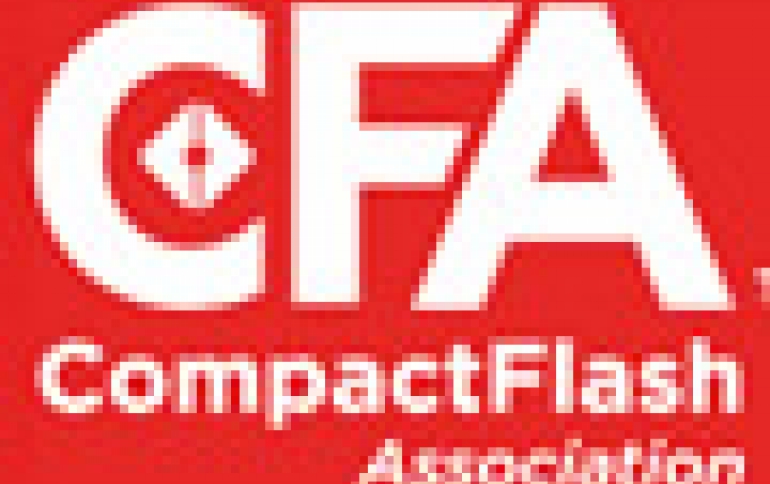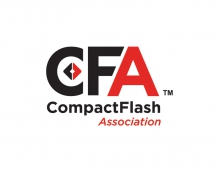
New Standard Proposed For Next-Generation High-Speed Memory Cards
SanDisk, Nikon and Sony today announced the joint development of
a set of specifications that addresses the future requirements of
professional photography and video markets.
The three companies proposed the specifications to the
CompactFlash Association (CFA), the international standards
organization, with the intent to standardize the format. The
CompactFlash Association formed a new working group to develop a
next-generation memory card.
The proposed specifications achieve data transfer rates of up to 500 megabytes per second (MB/sec)3 (theoretical maximum interface speed) using the PCI Express interface. The increased speeds will enable imaging and video applications that could not be accomplished using the current CompactFlash specification?s Parallel ATA (PATA) interface. CF6.0, released in November 2010, offers maximum performance of up to 167MB/sec.
The new specifications? faster speeds enable continuous burst shooting of massive RAW images. The enhanced performance also allows users to quickly transfer storage-intensive high-resolution photos and videos from the card to a computer. The specifications combine high-speed data transfer with low power consumption via a power scaling system to extend battery life.
In addition to high performance capabilities, the new memory card specifications also meet the future capacity and durability requirements of professional imaging applications. The proposed new format has the potential to extend theoretical maximum capacities beyond two terabytes (TB), making it especially useful for high resolution images and HD video applications. Similar in size to a CompactFlash card, the new format?s access control function and durable form factor produce a combination of physical ruggedness and reliability that is indispensable for professional usage models.
CFA members can join the new workgroup for considering the ratification of the new specification.
"Future professional photography and video applications will require memory cards with faster read/write speeds," said Mr. Shigeto Kanda of Canon and the CFA chairman of the board. "The development of a new high-performance card standard with a serial interface will meet the needs of the professional imaging industry for years to come and open the door for exciting new applications."
The current CF5.0 Specification?s PATA (parallel ATA) interface delivers up to 133MB/second speeds. Although the PATA interface still has room to increase performance, the serial interface can meet the long-term speed requirements of professional DSLR and video markets. The CompactFlash Association recently approved and announced the CF6.0 specification with a maximum speed of 167MB/second.
The CFA?s new working group will attempt to establish a roadmap for a card format standard that includes a high-speed serial interface that exceeds the PATA interface speed.
The most recently published CF Specifications, Revision 5.0 (PATA interface) and Revision 6.0, are available for download from the CFA web site at http://www.compactflash.org.
The proposed specifications achieve data transfer rates of up to 500 megabytes per second (MB/sec)3 (theoretical maximum interface speed) using the PCI Express interface. The increased speeds will enable imaging and video applications that could not be accomplished using the current CompactFlash specification?s Parallel ATA (PATA) interface. CF6.0, released in November 2010, offers maximum performance of up to 167MB/sec.
The new specifications? faster speeds enable continuous burst shooting of massive RAW images. The enhanced performance also allows users to quickly transfer storage-intensive high-resolution photos and videos from the card to a computer. The specifications combine high-speed data transfer with low power consumption via a power scaling system to extend battery life.
In addition to high performance capabilities, the new memory card specifications also meet the future capacity and durability requirements of professional imaging applications. The proposed new format has the potential to extend theoretical maximum capacities beyond two terabytes (TB), making it especially useful for high resolution images and HD video applications. Similar in size to a CompactFlash card, the new format?s access control function and durable form factor produce a combination of physical ruggedness and reliability that is indispensable for professional usage models.
CFA members can join the new workgroup for considering the ratification of the new specification.
"Future professional photography and video applications will require memory cards with faster read/write speeds," said Mr. Shigeto Kanda of Canon and the CFA chairman of the board. "The development of a new high-performance card standard with a serial interface will meet the needs of the professional imaging industry for years to come and open the door for exciting new applications."
The current CF5.0 Specification?s PATA (parallel ATA) interface delivers up to 133MB/second speeds. Although the PATA interface still has room to increase performance, the serial interface can meet the long-term speed requirements of professional DSLR and video markets. The CompactFlash Association recently approved and announced the CF6.0 specification with a maximum speed of 167MB/second.
The CFA?s new working group will attempt to establish a roadmap for a card format standard that includes a high-speed serial interface that exceeds the PATA interface speed.
The most recently published CF Specifications, Revision 5.0 (PATA interface) and Revision 6.0, are available for download from the CFA web site at http://www.compactflash.org.




















